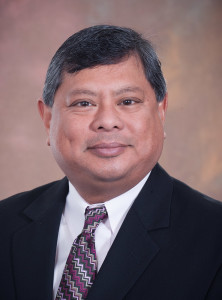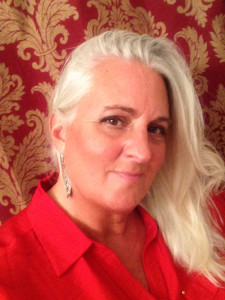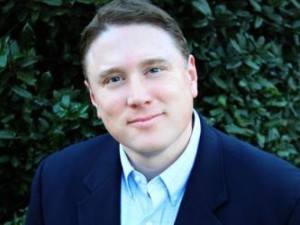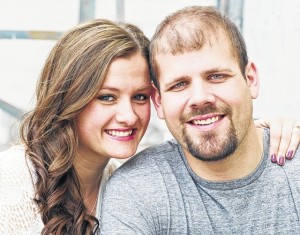Class Notes
Please submit your class note to: Amanda.Schwartz@utoledo.edu
’50’s
 |
Art Jibilian (Bus ’51) was honored by Congressman Bob Latta (Law ’81) as he spoke on the House floor in favor of legislation that was authored to honor veterans of the Office of Strategic Services with a Congressional Gold Medal. The bill passed unanimously and Jibilian was honored posthumously with the Congressional Gold Medal for his service in Operation Halyard in Yugoslavia. https://youtu.be/i-mPlYtoQfE |
’80’s
 |
Kathleen Schmitz (Bus ’88) was unanimously approved as the Van Wert City Board of Education assistant treasurer. Van Wert, located in Ohio, has an elementary school, middle school, and high school. |
’90’s
Gwen Roth (Univ Coll ’95) participated in Miami University’s Earth Expeditions global field course in Guyana, where she studied traditional ecological knowledge of the Makushi and the potential local wisdom to guide conservation initiatives. Roth, an educational specialist at Hamilton County Soil & Water Conservation District, resides in Cincinnati, Ohio. Her studies in Guyana were for a graduate course in pursuit of her master’s degree from Miami University’s Advanced Inquiry Program.
’00’s
Sara M. (Bodi) Gorman (HSHS ’09) received the 2016 Pediatric Respiratory Care Achievement Award from University Hospitals – Rainbow Babies & Children’s Hospital, located in Cleveland, Ohio.
Phil Riegle (Law ’04) was sworn in as the Hancock County, Ohio, prosecutor and will serve a four-year term beginning in January.
’10’s
 |
*Zachary A. Cheslock (Law ’16) joined the Toledo office of Shumaker, Loop & Kendrick, LLP. as an associate attorney in the corporate practice group. |
Faculty, staff & friends
Dear Peter,
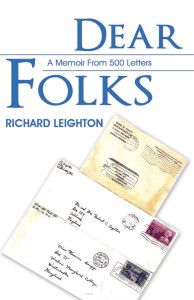 I’m writing you to recount and share some of the experiences we had in launching the relatively new medical school, then known as the Medical College of Ohio at Toledo. Much of what appears in this letter reflects the content of letters I wrote to my mother in the 1970s and 1980s. She kept those letters and just recently my nephew discovered them and sent them on to me. I’ve supplemented that information with excerpts from the book on the early history of the college that you edited and for which I wrote a chapter. I realize that you probably recall all these events as well as I do but I’m writing about them now in hopes they will not on only stimulate both of our memories but will also be of interest to other readers of this memoir.
I’m writing you to recount and share some of the experiences we had in launching the relatively new medical school, then known as the Medical College of Ohio at Toledo. Much of what appears in this letter reflects the content of letters I wrote to my mother in the 1970s and 1980s. She kept those letters and just recently my nephew discovered them and sent them on to me. I’ve supplemented that information with excerpts from the book on the early history of the college that you edited and for which I wrote a chapter. I realize that you probably recall all these events as well as I do but I’m writing about them now in hopes they will not on only stimulate both of our memories but will also be of interest to other readers of this memoir.
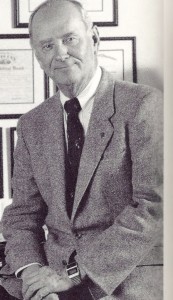 In the Spring of 1972 I first became aware that the Medical College of Ohio (MCO) was looking for a Chief of Cardiology. The school was new, just graduating its first class that year. In spite of my aversion to cold weather, I paid a visit and was interviewed by the school’s first Chairman of Medicine, and your colleague, Dr. George Ludwig. He was an endocrinologist with a special interest in metabolic diseases and he had been recruited from the University of Pennsylvania 3 years before my visit. His first year was spent on a research sabbatical so during that year you began organizing the department which remained quite small. Having accompanied him from Penn, I think you shared his vision of the kind of department he was hoping to build.
In the Spring of 1972 I first became aware that the Medical College of Ohio (MCO) was looking for a Chief of Cardiology. The school was new, just graduating its first class that year. In spite of my aversion to cold weather, I paid a visit and was interviewed by the school’s first Chairman of Medicine, and your colleague, Dr. George Ludwig. He was an endocrinologist with a special interest in metabolic diseases and he had been recruited from the University of Pennsylvania 3 years before my visit. His first year was spent on a research sabbatical so during that year you began organizing the department which remained quite small. Having accompanied him from Penn, I think you shared his vision of the kind of department he was hoping to build.
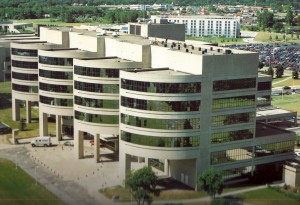 Facilities were rather primitive in those days. The Department of Medicine was housed in a former hospital building (the Roche Building) that was adjacent to the Maumee Valley Hospital, itself an older county hospital. In the cardiovascular area there were only two full-time faculty, each of whom had primary responsibilities elsewhere. Bob Page had arrived in 1968 as the institution’s first Dean and Mary Clifford had arrived in 1971 with a primary appointment in a sister department, the Department of Social Medicine. She directed a 3-bed CCU and became involved in developing the cardiovascular curriculum. Each of them taught students (the first class had 32 students) and residents physical diagnosis and they read electrocardiograms but beyond ECG recorders there were no cardiovascular diagnostic facilities and no cardiac surgery program.
Facilities were rather primitive in those days. The Department of Medicine was housed in a former hospital building (the Roche Building) that was adjacent to the Maumee Valley Hospital, itself an older county hospital. In the cardiovascular area there were only two full-time faculty, each of whom had primary responsibilities elsewhere. Bob Page had arrived in 1968 as the institution’s first Dean and Mary Clifford had arrived in 1971 with a primary appointment in a sister department, the Department of Social Medicine. She directed a 3-bed CCU and became involved in developing the cardiovascular curriculum. Each of them taught students (the first class had 32 students) and residents physical diagnosis and they read electrocardiograms but beyond ECG recorders there were no cardiovascular diagnostic facilities and no cardiac surgery program.
A Distracted Chairman
For me to move into this situation from Ohio State where I had become accustomed to state-of-the-art diagnostic and research facilities presented significant challenges. On the other hand, it provided me an opportunity to build a cardiovascular division from the ground up and I found that possibility intriguing and potentially the source of a lot of satisfaction. As a result, after my visit, I let Dr. Ludwig know that I was interested.
With a limited faculty and many demands on his time Dr. Ludwig was easily distracted. After my visit in May I heard nothing from him until the following December when he called me one evening to offer me the job. Thus it seemed that after 7 months he suddenly realized he still didn’t have a Chief of Cardiology. This time delay suggested to me that I was unlikely to get the support I would need so I declined his offer. A year later Dr. Ludwig met the same fate as had Dr. Wiseman, my former Chairman of Medicine at Ohio State: he had an intracerebral hemorrhage and died. In both cases they had apparently not had adequate management of their hypertension which was unfortunate. As physicians they should have recognized that hypertension is known as the silent killer. Blood pressure should be closely monitored. With Dr. Ludwig’s passing you became the acting chairman. We opened a new dialogue and by July of 1974 I felt I was ready to assume the position of Chief of Cardiology at the Medical College of Ohio.
My 23 years in Toledo began with the purchase of a 3-story frame house, built in 1918. Located in the Ottawa Hills suburb, it was within walking distance of an excellent school system. The house needed considerable renovation, including replacement of water pipes and a radiator system, installation of central forced air heating and air conditioning, a complete renovation of the kitchen and enclosure of a screened porch off the living room. This process consumed much of the first year and challenged our family as we accommodated to living in a construction project.
Reconstruction
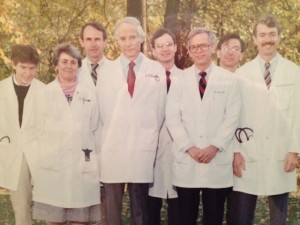 The house needed reconstruction but so did the Cardiology Division at MCO. As part of my recruitment I had been given a commitment to develop an up-to-date cardiac catheterization lab, an expanded CCU and a heart station capable of supporting a variety of noninvasive measurements. I brought no new faculty with me but as part of my recruitment the institution agreed to support Dr. Subhash Khullar for a year of training in nuclear cardiology at the University of California San Diego and subsequently as junior faculty at MCO. He had been a resident in internal medicine at MCO and then a cardiology fellow at Ohio State.
The house needed reconstruction but so did the Cardiology Division at MCO. As part of my recruitment I had been given a commitment to develop an up-to-date cardiac catheterization lab, an expanded CCU and a heart station capable of supporting a variety of noninvasive measurements. I brought no new faculty with me but as part of my recruitment the institution agreed to support Dr. Subhash Khullar for a year of training in nuclear cardiology at the University of California San Diego and subsequently as junior faculty at MCO. He had been a resident in internal medicine at MCO and then a cardiology fellow at Ohio State.
To assume my position as division chief and plan such an ambitious cardiovascular program in the absence of a permanent Chairman of Medicine, my academic superior, appeared to be a risky move. On the other hand it appeared that my skills were needed and I already had a lot of other key faculty support. Dr. William Blakemore, a cardiothoracic surgeon you had known in Philadelphia, had arrived as Chairman of the Department of Surgery the year before and was anxious to get an open-heart surgery program started. Dr. Ramon Rodriguez-Torres, a pediatric cardiologist, was chairman of the Department of Pediatrics. He wanted access to a catheterization lab and open-heart surgery as well. A former colleague of mine at Ohio State, Dr. Atis Freimanis, was Chairman of the Department of Radiology and was eager to cooperate in this effort; and, of course, I had your support.
A Unique Curriculum
MCO’s School of Medicine began in 1969 with a 3-year curriculum. When I arrived the third class had just graduated. At that time the State of Ohio, based on the perception that there would be a physician shortage, had provided funding to encourage creation of 3-year curricula. The teaching of the basic sciences was a combined effort of clinical and basic science faculty. I found this arrangement stimulating since clinicians like me had to meet with our basic science counterparts to plan the curricular segments; and I got to meet and know faculty that I wouldn’t have encountered otherwise. This arrangement continued until 1980 when the curriculum reverted to a conventional 4-year arrangement with 2 basic years and 2 clinical years. By that time the additional State funding had been withdrawn. The change was welcomed by most of the faculty for different reasons: many of the basic scientists wanted to deliver their lectures unimpeded by a discussion process with their clinical counterparts; and the clinicians, having become busier with patient care responsibilities, felt they didn’t have the extra time to devote to a more integrated curriculum. I thought the change constituted a significant loss for both camps.
An Informal CCU
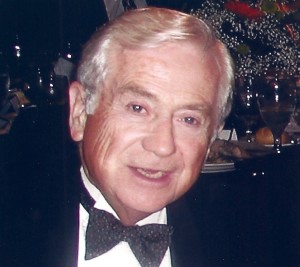 During our first year, working in the old Maumee Valley Hospital, we created an expanded six-bed CCU and a heart station. Construction of the cardiac catheterization lab began in the Department of Radiology, to be completed by year’s end. Dr. Clifford continued to direct the CCU with considerable help from the able head nurse, Debbie Rodeghero and subsequently by her equally able successor, Kate DeMain McGreevey. The CCU was one large room with a central nursing station and dividers placed between patient beds. While this arrangement afforded little patient privacy, some patients who occupied our more private subsequent CCU related that they felt more secure in the original unit.
During our first year, working in the old Maumee Valley Hospital, we created an expanded six-bed CCU and a heart station. Construction of the cardiac catheterization lab began in the Department of Radiology, to be completed by year’s end. Dr. Clifford continued to direct the CCU with considerable help from the able head nurse, Debbie Rodeghero and subsequently by her equally able successor, Kate DeMain McGreevey. The CCU was one large room with a central nursing station and dividers placed between patient beds. While this arrangement afforded little patient privacy, some patients who occupied our more private subsequent CCU related that they felt more secure in the original unit.
Initially for intravascular pressure monitoring we had only one transducer (recording device) so if two patients required monitoring, the transducer would be passed back and forth under one of the dividers. One patient who was there because of recurrent ventricular tachycardia used to walk around the unit, entertaining fellow patients with his singing. The nurses let the girl friend of one elderly man sneak his dog into the unit for a brief assignation. One night, to relieve the tedium, after the CCU received an urgent call about an admission from the emergency room, a stretcher bearing a large dead fish was rushed to the unit. Air conditioning was always problematic and there were no screens on the windows. This combination allowed some bees to enter the unit one evening when we had a patient who was allergic to bee stings. The unit had no backup power which became a problem one night when a squirrel was zapped in the hospital transformer, knocking out the power for several hours.
An Auspicious Year
In many ways the year 1975 was an auspicious year. First was the arrival of a new Chairman of the Department of Medicine, Dr. Patrick Mulrow, relieving you of your duties as acting chairman. He had been Chief of Endocrinology at the Yale University School of Medicine. He came with new faculty and the promise of more faculty positions and a large research grant devoted to elucidating the endocrine causes of hypertension.
“A Drunken Sailor”
My relationship with Pat Mulrow didn’t get off to the best start. MCO faculty were supported by a combination of state salaries and a practice plan which had a taxation system that permitted the school, the department and the division to accrue monies. At that time noon conferences for faculty, residents and students were often supported by drug companies who supplied lunches. I didn’t want to be beholden to the drug companies for lunch money so I had been using some of my division money to buy lunches for our weekly cardiovascular conference. Pat Mulrow who apparently was more tight-fisted than I with the expenditure of institutional funds, called me in one day and accused me of spending money “like a drunken sailor.” Having had some experience with drunken sailors, I denied the allegation. We were able to resolve that issue and subsequently became close colleagues and the best of friends.
The Stranahan Foundation
With the opening of the new cardiac catheterization lab in 1975 Dr. Khullar returned to MCO and we recruited Dr. Dennis Nelson, a newly minted PHD in bioengineering from Case Western Reserve University to support our interest in the computer quantification of scintigraphic images. A key event was the award of funds from the Stranahan Foundation that permitted us to purchase a gamma camera devoted to animal studies. The Stranahan Foundation was a Toledo-based organization, established by the Stranahan brothers who had created the once very successful Champion Spark Plug Company. This foundation provided grants for a variety of community betterment projects in Toledo.
Canines and Fellows
Working with Dr. Tom Andrews who directed bioengineering efforts at MCO and with Dr. Jim Ross, a cardiovascular physiologist in the Department of Physiology, we were then able to obtain an NIH contract devoted to quantification of myocardial infarction in a canine model by using scintigraphic techniques. Eventually this grant funded the involvement in this project of 19 MCO faculty members from 8 departments and the institution’s Animal Research Facility. I found that working in this relatively small institution had certain advantages. I liked the ease of working with colleagues across departmental lines.
We also began a cardiology fellowship training program in 1975, incorporating cardiologists at The Toledo Hospital and St. Vincent Medical Center as well. Initially this was a two-year program with 3 fellows per year but by the early 1980s it had evolved into a 3-year program that took one or at the most two fellows per year, with clinical rotations at MCO and at The Toledo Hospital for two years. A third year was devoted to a research project, funded by the local branch of the American Heart Association. One of my greatest satisfactions derived from my professional activities in those years has been the training and development of new specialists in cardiovascular medicine.
Ohio-Genesee Valley and the Necktie Test
When I was still at Ohio State a regional cardiovascular research group was formed that included faculty from Ohio State, the University of Pittsburgh and West Virginia University. Later the group expanded to include the University of Cincinnati, the University of Rochester, the University of Michigan and MCO. Since the group extended from Ohio eastward to Rochester, we chose the name “Ohio-Genesee Valley Heart Group” on the pretense that there was such a valley. This organization had an annual meeting that rotated among the institutions and provided an informal forum for fellows and junior faculty to present their research.
On the way to one of these meetings in Pittsburgh I was the driver of a car that had an unreliable gas gauge and came to a halt along the Ohio Turnpike. Dr. Khullar diagnosed the problem by utilizing the necktie test. He removed his necktie and fed it down into the gas tank. When it emerged dry he rightly concluded that the gas tank was empty . This was in the days before cell phones but fortunately a passing motorist summoned help and we were soon on our way.
New President
 At the top of the administrative structure at MCO there was a President, advised by a 9-member Board of Trustees. The first President was Glidden Brooks who came from Brown University. He was followed by Marian Anderson who had been recruited to MCO as Chairman of the Department of Surgery. When Dr. Anderson left in 1977 Dr. Richard Ruppert was appointed to fill the vacancy. I had known Dick Ruppert at Ohio State where he had been a student, resident, fellow and finally faculty member in the Gastroenterology Division; and he had been the caregiving physician for my father in his terminal illness a decade earlier.
At the top of the administrative structure at MCO there was a President, advised by a 9-member Board of Trustees. The first President was Glidden Brooks who came from Brown University. He was followed by Marian Anderson who had been recruited to MCO as Chairman of the Department of Surgery. When Dr. Anderson left in 1977 Dr. Richard Ruppert was appointed to fill the vacancy. I had known Dick Ruppert at Ohio State where he had been a student, resident, fellow and finally faculty member in the Gastroenterology Division; and he had been the caregiving physician for my father in his terminal illness a decade earlier.
Prior to his MCO appointment Dick Ruppert had served as the State’s Vice Chancellor for Health Affairs. As a result, he had developed unique legislative connections that enabled him to secure funding that was needed to develop this still new institution in Toledo. During his 16 year tenure as President, he oversaw tremendous growth in campus buildings and programs. In 1990 his recommendation was key to my assuming first an acting role, then a permanent appointment at MCO as Vice President for Academic Affairs and Dean of the School of Medicine.
New Faculty, New Hospital
Before the 1970s were out I had recruited three new faculty members, Drs. Peter Temesy-Armos, Lucy Goodenday and Ted Fraker who brought us new skills in electrophysiology, nuclear medicine and echocardiography. They continued in these roles throughout my tenure as division chief. The new faculty came when we were still housed in the old county hospital with its inconveniences and limited resources with the faith that a new hospital would arise as part of the new MCO campus; and indeed, the 1970s ended with completion of this state-of-the-art facility. I remember that you were part of the transition to the new hospital when one Satuday morning, December 15, 1979, 100 patients were safely moved in seven tractor-trailer vans from the Maumee Valley Hospital to the new Medical College Hospital.
Like other buildings on campus the new hospital was an architectural gem. It was part of the original campus plan that had been developed by Minoru Yamasaki, the renowned architect who had designed the World Trade Center’s twin towers in New York City. Patient rooms on the third to sixth floors of the hospital were housed in four distinctive “fans”, each with reflective windows.
In the new building we had a 16-bed combined CCU and Medical Intensive Care Unit with an adjacent 11-bed progressive care unit, equipped with telemetry monitoring. Immediately adjacent to these units was the heart station and a procedure room where catheters and pacemakers could be inserted in critically ill patients. A new cardiac catheterization lab had been created as well in the Department of Radiology.
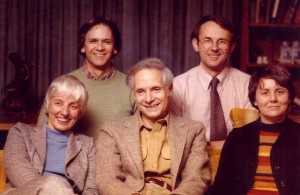 In the 1980s two of our cardiology fellows, Dr. Tom Walsh and Dr. Mark Burket became faculty members. Currently Mark Burket is chief of the cardiology division. Subsequently we added two more faculty members, Dr. Blair Grubb and Dr. Jack Schwakun. Jack moved on as did Mary Clifford but Blair stayed and he has become a world renowned expert in the diagnosis and management of orthostatic hypotension and related syndromes. Mary completed a psychiatric residency at the University of Michigan and then she was placed in charge of the medical aspects of Michigan’s heart transplant program.
In the 1980s two of our cardiology fellows, Dr. Tom Walsh and Dr. Mark Burket became faculty members. Currently Mark Burket is chief of the cardiology division. Subsequently we added two more faculty members, Dr. Blair Grubb and Dr. Jack Schwakun. Jack moved on as did Mary Clifford but Blair stayed and he has become a world renowned expert in the diagnosis and management of orthostatic hypotension and related syndromes. Mary completed a psychiatric residency at the University of Michigan and then she was placed in charge of the medical aspects of Michigan’s heart transplant program.
Our early years at MCO were exciting, Peter. Working with a relatively small faculty we got a new medical school off the ground and I believe we initiated first-rate training programs for residents and students. We can look back on these times with pride.
Births and Marriages
Faculty, staff & friends
Catherine A. Belt, Holland, Ohio at 64. She was a clerical specialist at MCO/MUO/UTMC from 1970 until her retirement in 2006.
**Dr. Andre Delbecq (Bus ’58), Almeda, Calif. at 80. He was a lecturer at UT in 1959 and 1960. After receiving master’s and doctoral degrees, he returned to Toledo as an assistant professor of general business in 1962 and was an associate professor or organization behavior when he left UT in 1967.
John R. Hoellrich, Sylvania, Ohio at 75. He was a local architect who started his own firm, Hoellrich’s, whose projects included Centennial Hall, which was renamed Savage Arena. He was also an instructor in UT’s former Community and Technical College.
Dorothy (Gust) Rouppas, Toledo at 54. She worked at MCO/MUO/UTMC from 1983 until her retirement as an enterprise health application administrator in Clinical Informatics in 2013.
Marlyn “Marly” Jean (Theiler) Reider, Perrysburg, Ohio at 80. She was a teaching associate in the College of Nursing from 1990 to 1993.
Roderick C. Stokes, Toledo at 64. He was a former employee who worked in Maintenance.
Dr. Richard J. Boden Jr., Rochester, N.Y. at 57. He was a former associate professor of finance.
Judy L. Rice, Toledo at 46. She joined the University in 2002 as a custodial worker and also took classes at UT.
40’s
Richard Burnett (Bus ’47), San Angelo, Texas at 94.
**Helen Benschoter (Ed ’44), Toledo at 94.
Richard Wojcikowski (Eng ’49, MEng ’78), Toledo at 95.
**Edward Yosses (Bus ’49), Toledo at 91.
50’s
Arthur Jaworski (Pharm ’50), Sylvania, Ohio at 88.
Norman McClurg (Bus ’55), at 83.
Joseph Hendrikx (Bus ’58), Perrysburg, Ohio at 87.
Allan Chabler (A/S ’58, Law ’61), Toledo at 81.
**Edward Stepp (Eng ’55), Frostburg, Md. at 82.
**Charles Marr (Bus ’51), Brooklyn, Mich. at 89.
**Richard Bradley (Bus ’54), Sylvania, Ohio at 85.
Carol Gates (A/S ’50), Pittsburgh, Pa. at 88.
Richard German (A/S ’50), Toledo at 90.
Erleen Steiger (Ed ’50), Toledo at 88.
**The Hon. Gary Gabriel (A/S ’50, Law ’55), Sylvania, Ohio at 87.
Richard Lardinais (Pharm ’56), Bowling Green, Ohio at 82.
60’s
Marie Williamson (Med ’69), Maumee, Ohio at 86.
Don Neifer (Eng ’62), Swanton, Ohio at 77.
**Dr. Richard Penwell (Eng ’64), Cornelius, N.C. at 74.
Richard O’Brien (Bus ’65, Law ’69), Lambertville, Mich. at 78.
**Jean Micham (Ed ’65, Med ’70), Loveland, Ohio at 81.
Harold Singer (Bus ’68, MBA ’85), Reynoldsburg, Ohio at 70.
**Dr. Flora McKenzie (Ed ’60), Toledo at 90.
Katherine Eby (A/S ’61, MA ’66), Holland, Ohio at 92.
70’s
Georgia Poplar (Med ’74), Rochester Hills, Mich. at 91.
Patrick McNulty (UTCTC ’73, A/S ’76), Toledo at 91.
Ralph Weiner (Eng ’71), Maumee, Ohio at 69.
Aimee Kotecki (Ed ’72), Toledo at 66.
Edward Grosswiler (UTCTC ’78), Sylvania, Ohio at 71.
**Joseph Schaefer (Bus ’77), Toledo at 63.
Nancy Collins (Med ’77), Edon, Ohio at 73.
Kenneth Shotlander (Law ’71), Somerville, N.J. at 71.
Robert Pereus (Bus ’77), Temperance, Mich. at 88.
Lawrence Curtis (A/S ’71, Law ’75), Lambertville, Mich. at 68.
Barbara Gearhart (Univ Coll ’76, Med ’86), Toledo at 69.
**Rita Kolbeck (Med ’73), Toledo at 95.
Berene Miller (Bus ’75), Toledo at 91.
80’s
Dr. James Frank (MED ’82), Sandusky, Ohio at 63.
Keith Brown (UTCTC ’83), Holland, Ohio at 56.
Richard Rhonehouse (UTCTC ’81), Grand Rapids, Mich. at 76.
Jonathan Augustine (Bus ’86), Perrysburg, Ohio at 58.
Stefan Ourlian (Pharm ’85), Olmsted Falls, Ohio at 54.
Margaret Urbaniak (Ed ’88), Maumee, Ohio at 68.
Doris Hofstetter Yoesoep (Ed ’82), Toledo at 87.
**William Candelore (Univ Coll ’81), Clermont, Fla. at 88.
90’s
Lisa Nordhaus (UTCTC ’96), Perrysburg, Ohio at 45.
Thomas Simpson (Univ Coll ’92), Ypsilanti, Mich. at 72.
Christina Dudley (Eng ’96), Dayton, Ohio at 44.
Shannon Kusian (A/S ’97), Sylvania, Ohio at 43.
Cynthia Curtis (Ed ’91), at 58.
Robert Gleason (Univ Coll ’94), Columbus, Ohio at 78.
Pauline Pool (UTCTC ’96), Sylvania, Ohio at 66.
Churton Budd (A/S ’91, UTCTC ’93), Port Clinton, Ohio at 52.
00’s
Tara Bunge (A/S ’01), Ottawa Lake, Mich. at 38.
Dr. Carl Miller (PhD ’01), at 53.
Craig Wittenberg (Ed ’00), Temperance, Mich. at 70.
*Annual Alumni Association Member
**Lifetime Alumni Association Member


